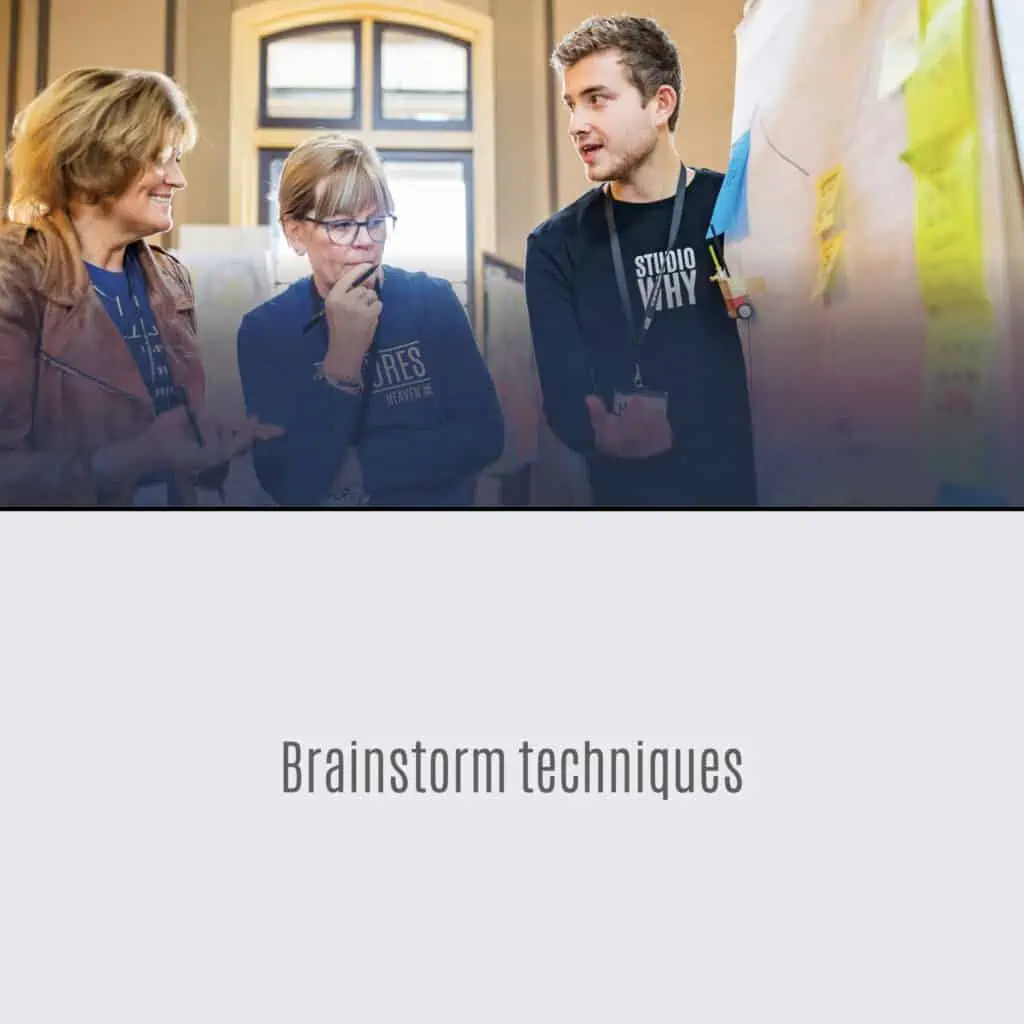Brainstorming is an important tool for generating ideas and finding solutions to problems, and it can be a valuable tool for businesses, organizations, and individuals.

Brainstorming is an important tool for generating ideas and finding solutions to problems, and it can be a valuable tool for businesses, organizations, and individuals.
We’ve all brainstormed. Whether this is in the workplace or on a private basis, most people are familiar with it. You can brainstorm in many ways or through various techniques. We will highlight a number of methods to keep you up to date.
Brainstorming is a process of generating ideas and solutions by actively engaging in thought and discussion with a group of people. The term “brainstorming” was first coined by Alex Faickney Osborn, an advertising executive, in his book “Applied Imagination” published in 1953.
Osborn developed the concept of brainstorming as a way to encourage creative thinking and problem-solving within organizations. He believed that the traditional way of thinking about problems – starting with a preconceived solution and working backwards – was too narrow and that it was important to encourage people to come up with as many ideas as possible without worrying about criticism or evaluation.
Osborn’s idea of brainstorming quickly caught on and became widely adopted in business, education, and other fields as a tool for generating ideas and finding solutions to problems. Today, brainstorming is still widely used as a tool for encouraging creative thinking and problem-solving in a variety of settings. We like to help organizations become more innovative by sharing proven techniques and strategies for managing innovation and unlocking growth opportunities. If you want to learn the principles of starting an innovative movement within your projects and organization you should consider our free course. Click here to take your organization to the next level of innovation!
Brainstorming is a process of generating ideas and solutions by actively engaging in thought and discussion with a group of people. It is important for a number of reasons:
Overall, brainstorming is an important tool for generating ideas and finding solutions to problems, and it can be a valuable tool for businesses, organizations, and individuals.
Here are a few examples of how brainstorming might be used in different settings:
Overall, brainstorming can be used in a variety of settings to generate ideas and find solutions to problems. It is a useful tool for encouraging creative thinking and collaboration.
Here are some steps you can follow to effectively conduct a brainstorming session:
Remember, the goal of brainstorming is to generate as many ideas as possible, so it’s important to keep an open mind and not worry too much about evaluating ideas until later in the process. By following these steps, you can effectively conduct a brainstorming session that helps you find creative solutions to problems.
Here are 15 brainstorming techniques that can be useful in generating ideas and finding solutions to problems:
These are just a few examples of brainstorming techniques that can be useful in generating ideas and finding solutions to problems. It’s important to keep in mind that different techniques may work better for different types of problems and groups of people, so it may be useful to try out a few different techniques to see what works best for your needs
There are a few different ways to conduct brainstorming sessions online:
Regardless of the method you choose, it’s important to ensure that everyone has a clear understanding of the problem or challenge being addressed, and to create a safe and supportive environment where people feel comfortable sharing their ideas. By following these guidelines, you can effectively conduct a brainstorming session online.
STUDIO.WHY is happy to help you go through the brainstorming methods and set up a successful session. Are you curious about how we give substance to brainstorming? Then follow our free webinars, free email course or training courses. Do you want to know more or do you have any questions? Please fill in the contact form below without obligation so that we can discuss the possibilities together!
Subscribe to our 3-weekly newsletter: The Innovators Journey to get valuable insights, tips, resources and special offers to drive change.
We are dedicated to helping individuals and organizations unlock their innovation potential. Our team offers a range of services including webinars, workshops, tailored programs, coaching, and training that can be tailored to fit your specific needs and goals. Whether you are a large group or an individual seeking one-on-one support, we have options to accommodate you. Contact us today to discover how we can help drive innovation and success within your organization.
Education
Public Service
Healthcare
Infra & Mobility
Tech & ICT
Food & Pleasure
Finance
STUDIO.WHY
Genteldijk 5
4191 LD Geldermalsen
The Netherlands
We set the language based on your browser settings. If you would like to visit the site in another language you are most welcome to select that here!